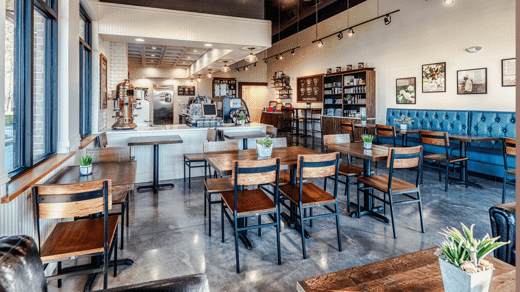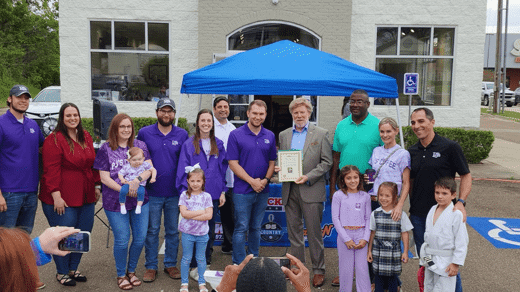For an on-the-go consumer, there are few things better than getting your food – or coffee – quickly and conveniently. It’s even better if you don’t have to leave your car to get it.
Drive-thrus have been a mainstay for fast food restaurants for decades, but now they’re cropping up everywhere from pharmacies to coffee shops. There’s a method to the madness – an estimated 50 to 70 percent of fast food sales come courtesy of the drive-thru. So, it’s only understandable that other concepts try to boost their sales with the same simple solution.
While some franchise coffee brands may be hesitant to alter their operations for a drive-thru location, PJ’s Coffee has been doing this for years. Ballard Brands, the group that owns PJ’s Coffee, always makes sure they’re on the cutting edge with new industry trends and innovations.
Mark Verges, Ballard Brands’ location development manager, shares a few drive-thru trends he’s seen over the years, and how he and his team support PJ’s franchisees interested in a drive-thru location:
Drive-Thrus Drive Sales
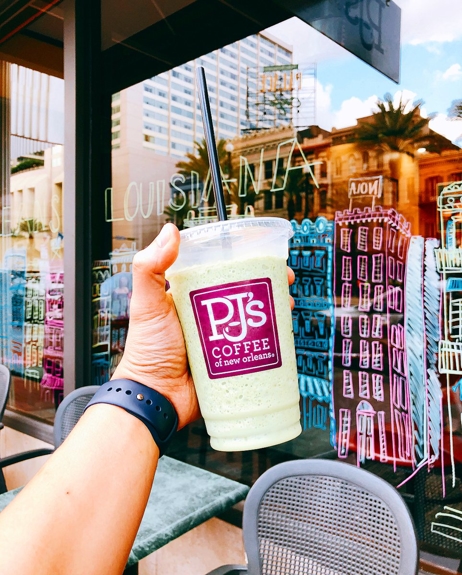
![]()
PJ’s franchisees understand that by creating a fast, efficient and friendly drive-thru, they can realize marked revenue gains and enhance customer retention. Innovations – from wireless headsets and order-confirmation boards to pre-sell signage – have created a better drive-thru model. This model is capable of handling 40 to 60 percent of business revenue.
“The customer’s need for speed and convenience has made drive-thrus a necessity in most typical end cap locations,” Mark said. “Customers rushing to work or a parent headed to drop off a child at school expect what a drive-thru offers: fast service and the convenience of staying in their car.”
Not only do drive-thrus make revenue handling easier, they can also have a strong impact on coffee sales.
“A drive-thru in the proper corridor or market area can have a 20 percent or greater positive impact on revenue,” Mark said. “If your closest competitor has a drive-thru, then you should definitely have one as well. Non-traditional, major city downtown areas and high-traffic pedestrian sites may not require a drive-thru to stay competitive.”
After implementing drive-thrus at multiple locations, PJ’s Coffee analysts found that those locations generated, on average, more than 25 percent more gross revenue than those without drive-thrus.
Site Selection for Drive-Thrus
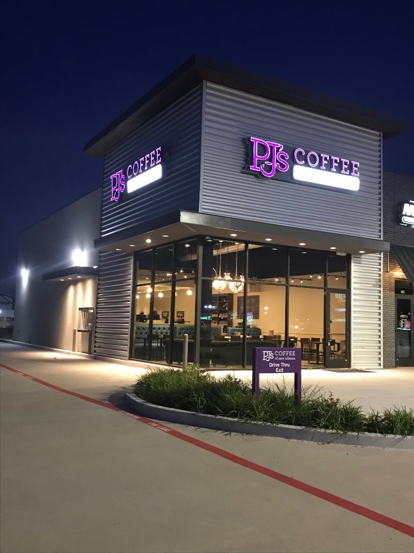
![]()
Finding the right site for drive-thrus can be a bit more involved than site selection for inline locations. This is one of the benefits of being backed by a team of site selection professionals, who are well-versed in the industry. Here are some questions Mark and his team are sure to ask:
- Is the drive-thru allowed by local code, and will we be able to get a permit to operate one?
- What is the best path for the car flow? Should they wrap around the building or simply drive to the front?
- How will car stacking work out?
- Will the cars stack into a major road or block traffic?
- What is the optimal location for:
- Exterior menu
- Canopy
- Brand signage
- Directional signage
- Headset hardware
Of course, there are many other factors to take into account when looking at a potential drive-thru site. But, these are just a few that will help you get an idea of whether it’s a strong area.
Adjustments for a Drive-Thru
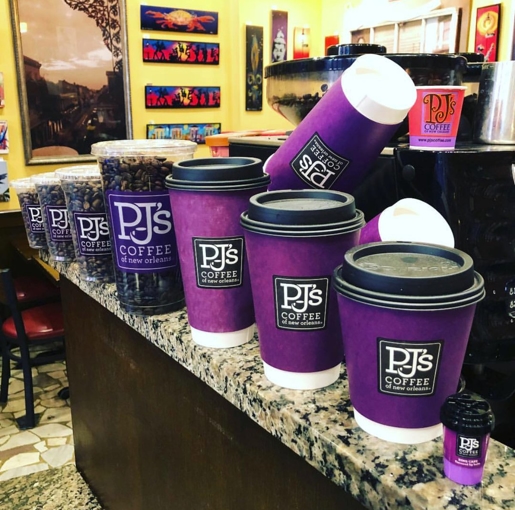
![]()
While a drive-thru can bring in more customers, the drive-thru technology alone is no longer enough to differentiate businesses. That’s why PJ’s offers first-rate technology, training and innovation as central parts of all operation strategies – drive-thru or otherwise.
PJ’s uses Square-based iPad programs for our POS system, which allows staff to walk outside and take orders when the car stack starts to grow. This helps streamline operations, while also getting customers through the queue quicker – but we’re always looking for ways to improve.
“We’re also adding a PJ’s app in the near future that will allow for mobile ordering and curbside pick-up, guided by our operations and a well-trained staff,” Mark said. “Of course, as a savvy chain, we will continue to increase marketing at the store level, and improve drive-thru communications and signage features to enhance order accuracy.”
While drive-thrus are becoming the norm within the food and beverage segment, it’s important to continue innovating to stay competitive. A drive-thru can have a significant positive impact on sales, but improving technology and operational efficiency will be the key to differentiation.




